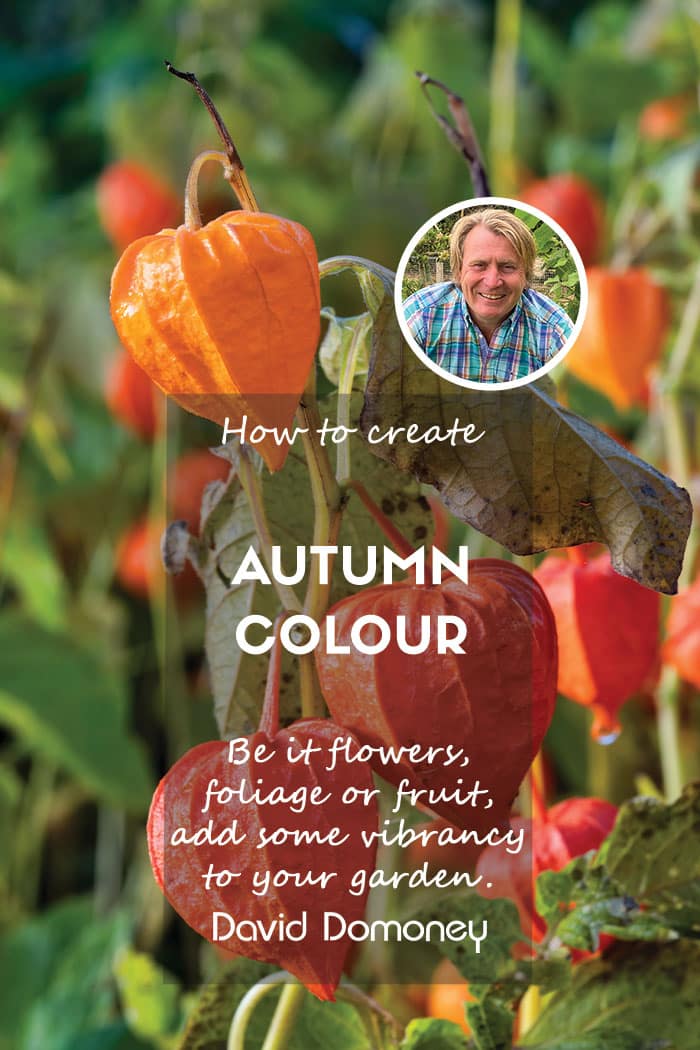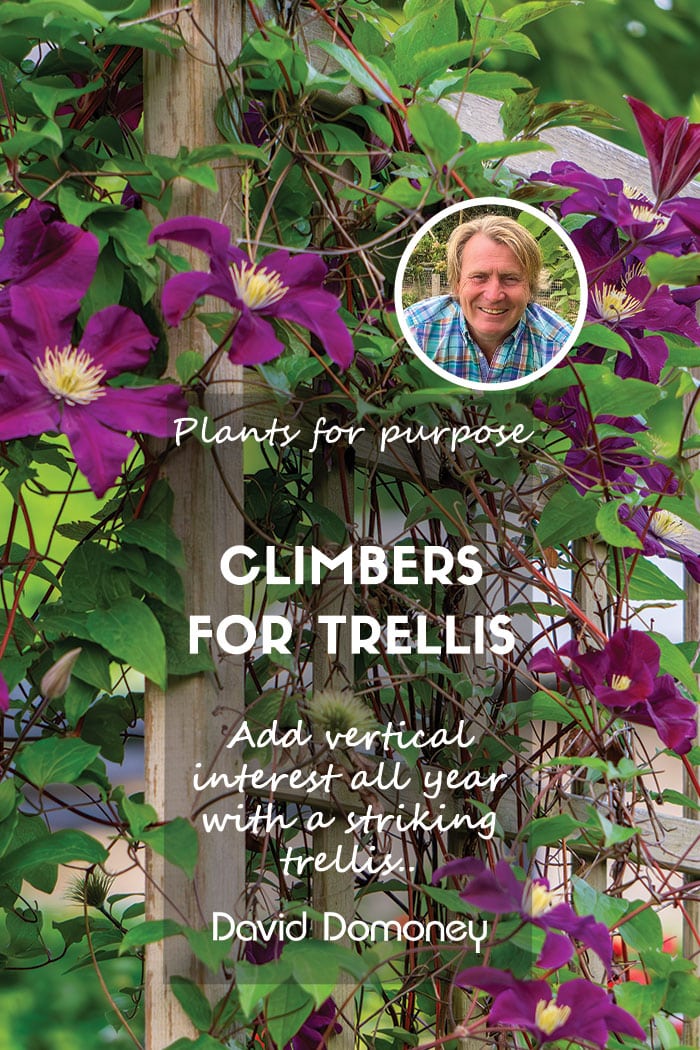David Domoney Glossary
There are currently 32 names in this directory beginning with the letter C.
Calcicole plants
This is a name for plants that thrive in lime-rich soil. Brassicas and Alpine plants are examples of plant families that need an alkaline or lime soil to thrive.
Calcifuge plants
This is a term for plants that are not tolerant of lime and thrive best in acid conditions. Examples of Calcifuge plants include heather, rhododendrons and lilies. If a calcifuge plant gets too much lime, its leaves may turn yellow due to nutrient deficiencies
Cane
This is the name for the upright stem of a raspberry or blackberry plant. Both soft fruits grow from canes which are often tied to wires or fencing for support.
Carrot
A favourite crop for many a grow your own enthusiast. Easy to grow and full of vitamins, these veg can be grown year-round.
Catch-crop
Faster growing crops that are sown in between other crops that as yet to fill the space. Typically you would sow spring onions, radish, or salad leaves.
Celery
In the wild you would typically find celery on boggy riversides and marsh ground. When planted at home they prefer moisture-retentive soil to thrive. The stems are tasty and are a healthy snack. The leaves can be bitter.
Chicken manure
Purchased in dried and pelleted, this is a good natural fertiliser. Any fresh poultry waste is best used on compost heaps.
Chitting
Chitting is a method of preparing seed potatoes for planting by removing all but the strongest growth sprouts.
Chlorophyll
Chlorophyll is the pigment that causes the green colour we see in most plants. This pigment is a vital part of the plants life cycle, as it allows the plant to absorb light which then provides energy for photosynthesis.
Climber/Climbing Plant
A climbing plant is a plant that naturally clings to surfaces such as a fence or trellis, and grows up and along it. Some climbing plants, such as Ivy, will cling to surfaces naturally and will even climb up brick walls. Others, like honeysuckle, need a framework to climb up, for example wires or a trellis. Some plants can be trained to climb but are not naturally climbing plants.
Cloche
A cloche is a small transparent cover used to protect young outdoor plants from cold weather. These can be made of plastic or glass, and come in different sizes and shapes such as domes or squares. They are useful for protecting individual half-hardy plants without the need for a greenhouse – as well as preventing damage from pests.
Club root
A fungal disease that impacts cabbage, cauliflower, and other members of the brassica family. Vegetables have distorted growth and their roots become swollen.
Cold
Soils that are clay-rich can take longer to warm updoe to high water and low air pocket content. These soils can take longer to produce crops.
Cold Frame
Cold frames are a smaller alternative to a greenhouse, and they are usually fixed onto the side of a house by three low brick walls and a glass roof that can be lifted to access the plants inside. Cold frames can be used to overwinter tender plants and acclimatize indoor sown plants, and are a smaller and cheaper alternative to a greenhouse.
Compaction
This occurs when the soil crumb structure is damaged by heavy rain or when bare soil is walked over in wet conditions.
Companion planting
The process by which you plant flowers or vegetables together to save space, attract pollinators or deter pests.
Compost
Compost is a broad term that generally means decomposed organic matter. You can make your own compost by breaking down waste materials such as fruit and vegetable scraps, or you can buy compost from a garden centre for a specific purpose. Compost can be used for sowing seeds and potting plants, rooting cuttings, or as a mulch over your beds and borders. It often contains fertilizers and nutrients that are specific for the purpose.
Conifer
A conifer is generally known to be a perennial evergreen plant that produces seed-bearing cones. Conifers come in all different shapes and sizes, from small shrubs to enormous trees. Yew and juniper are good examples of conifers that will work in your garden and provide colour and structure all year round.
Contact Weedkiller
This is a weed-killer that will kill any plant it comes into contact with and is not selective. To work, a contact weed-killer should be applied to any weeds during the growing season of the plant and in the daytime.
Coppice
A coppice is a section of woodland where the trees and shrubs are periodically cut back to ground level in order to stimulate new growth and provide wood.
Cordon
A cordon is a plant that is trained to grow from one main stem, by removing all side shoots. They can been grown upright or at an angle, and are often used as a way to save space, for example growing fruit trees such as apple and pear as cordons.
Corm
A corm is an underground storage organ from which a plant grows, made from the thick base of a stem. They are planted in the same way as bulbs, and each year the existing corm will die off and the plant will produce a new one above it.
Cover Crop
A cover crop is usually planted between main crops to protect and enrich the soil, as well as prevent weeds and erosion.
Crocks
Crocks are broken up pieces of pot that are placed in the bottom of pots to help with drainage, as they prevent soil from blocking the holes at the bottom of the pot. You can also use pebbles in this way.
Crop Rotation
Crop Rotation is the process of moving crops around in your vegetable plot and growing them in different locations each year. This is done in order to limit insect infestations and diseases, and to maintain good soil.
Crown
The crown of a plant is the part at the top of the roots of a perennial plant, where the new shoots grow from. This can normally be seen at the soil surface.
Cultivar
A cultivar is another word for a different variety of a plant. New varieties of plants generally evolve or are bred through cultivation, hence the name cultivar. The cultivar name is often seen in quotation marks at the end of the name, for example Clematis ‘Aotearoa’ where Clematis is the plant and ‘Aotearoa’ is the cultivar, or variety.
Cultivate
To cultivate something means to grow and sustain it. Cultivation of land can also mean to prepare an area for crops and gardening.
Cutting
A cutting is a small section of root, stem or leaf taken from one plant which is then used to grow another. Taking cuttings is a cheap way to increase the stock of plants you have without buying anything new.
Cuttings Compost
Cuttings compost is a specific type of compost mix that you can buy that is used to root cuttings into new plants. It usually contains of plenty of horticultural grit, in order to aid drainage and prevent the cutting from rotting.




Leave A Comment